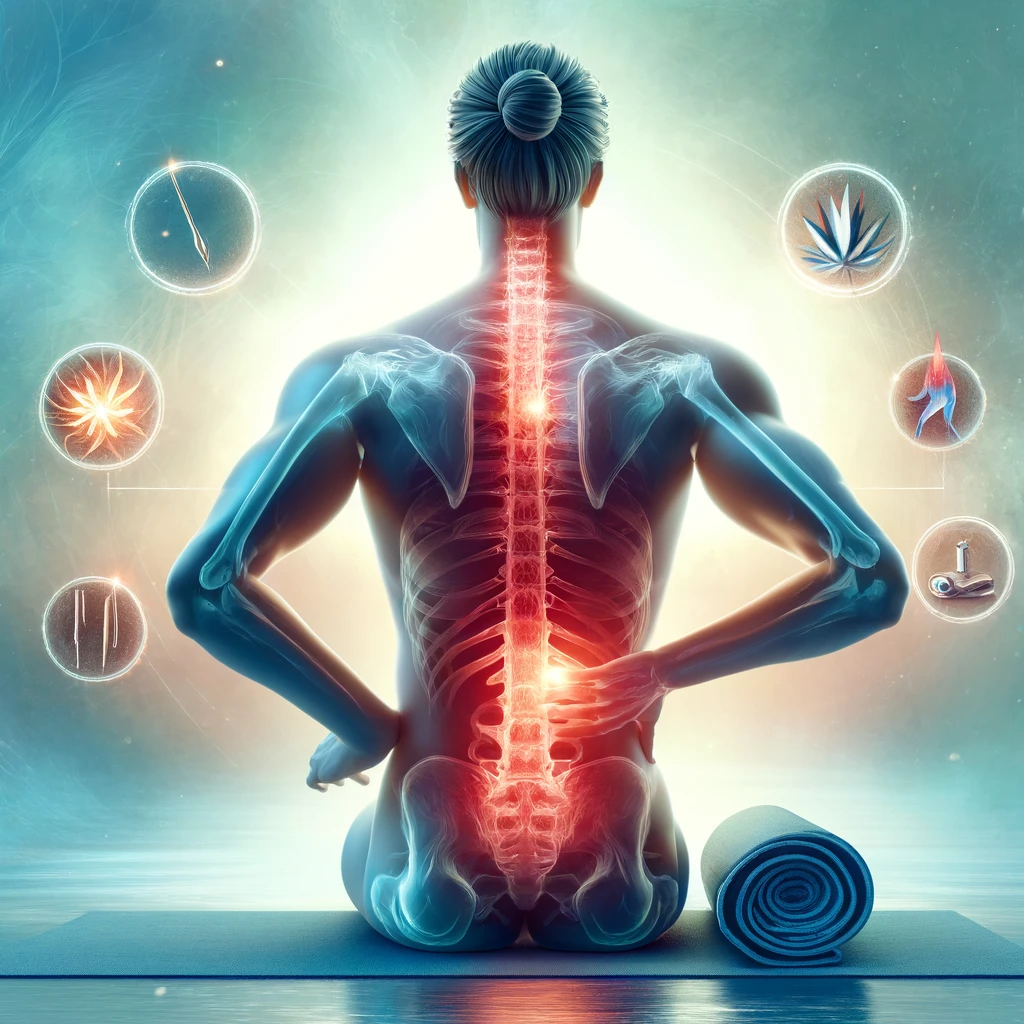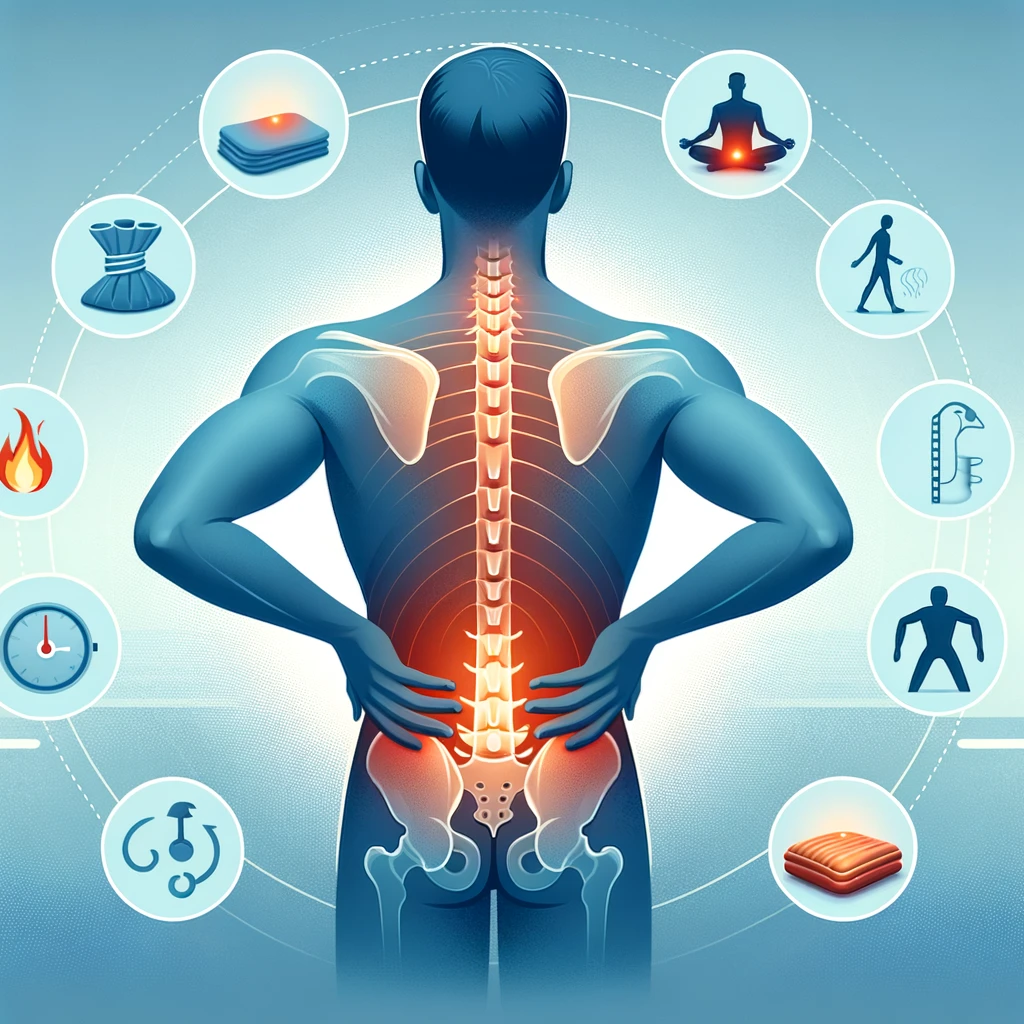
Table of Contents
Back pain affects millions of people worldwide and can significantly hinder daily activities and quality of life. Understanding the range of available treatments for back pain is crucial for those seeking relief and long-term management of their symptoms.
Understanding Back Pain
Anatomy of the Spine The spine is made up of vertebrae, discs, nerves, and muscles. Any issues with these components can lead to back pain, which can vary from mild discomfort to severe impairment.
Common Causes of Back Pain Causes range from muscle strains and degenerative discs to more serious conditions such as osteoporosis or spinal stenosis.
Home Remedies for Back Pain
Heat and Cold Therapy Applying heat can relax muscles and improve blood flow, while cold therapy can reduce inflammation and numb sharp pain.
Massage Gentle massage can help alleviate muscle tension and pain. It’s a widely accessible treatment that can be performed at home or by professionals.
Over-the-Counter Pain Medications NSAIDs and acetaminophen are commonly used to reduce pain and swelling. They should be used as directed to avoid side effects.
Physical Therapy Techniques
The Role of Physical Therapy Physical therapists can tailor exercises and therapy sessions to help strengthen back muscles and improve flexibility, crucial for pain relief.
Alternative Treatments
Acupuncture This ancient practice can help reduce chronic back pain by stimulating the nervous system and enhancing natural painkillers within the body.
Chiropractic Care Chiropractors adjust the spine to improve alignment and relieve pressure on the nervous system.
Yoga and Pilates These practices strengthen the body and increase flexibility, helping to prevent and alleviate back pain.
Medical Interventions
When to Consider Medical Treatment If non-invasive treatments are not effective, medical interventions like injections or surgery might be necessary.
Pain Management Medications For chronic back pain, doctors might prescribe stronger medications, which must be managed carefully to avoid dependence.
Surgical Options In severe cases, procedures like spinal fusion or disc replacement may be considered to relieve pain and restore function.
Lifestyle Adjustments
Ergonomic Workspaces Creating a back-friendly work environment can prevent the onset of pain associated with sitting for long periods.
Proper Lifting Techniques Learning and applying the correct methods to lift heavy objects can prevent back injuries.
Weight Management Maintaining a healthy weight reduces the strain on the spine and can prevent back pain.
Preventative Measures
Regular Exercise Staying active is one of the most effective ways to prevent back pain. Exercises that strengthen and stretch the back are particularly beneficial.
Balanced Diet Eating a diet rich in calcium, phosphorus, and vitamin D promotes bone strength, which is crucial for spinal health.
Stress Management Reducing stress through techniques like meditation or deep breathing can also alleviate back pain.
Emerging Therapies
Regenerative Medicine Treatments such as stem cell therapy and platelet-rich plasma (PRP) injections are being explored as options to repair damaged spinal tissues.
Conclusion
There are numerous treatments for back pain, ranging from simple home remedies to complex surgeries. It’s essential for those suffering from back pain to consult healthcare professionals to develop a treatment plan that addresses their specific needs.
FAQs
What is the most effective home remedy for back pain?
The most effective home remedy for back pain often involves a combination of heat and cold therapy. Applying a warm compress or heating pad can relax tense muscles and improve blood flow, while ice packs can reduce inflammation and numb more intense pain. Regular gentle stretching and maintaining activity levels can also significantly help manage and reduce back pain.
How often should I see a physical therapist for back pain?
The frequency of physical therapy visits can vary based on the severity and specifics of your back pain. Typically, a physical therapist might recommend sessions 1-2 times per week for 4-6 weeks as a start. After evaluating progress and depending on individual response to treatment, the frequency may adjust. Continuous re-evaluation will determine the need for ongoing therapy to ensure the best outcomes.
Is surgery necessary for back pain?
Surgery is generally considered a last resort for back pain and is only necessary when conservative treatments have failed and the pain is severe, persistent, and specifically diagnosable. Conditions such as significant spinal nerve compression, herniated discs causing debilitating symptoms, or structural abnormalities like severe scoliosis might require surgical intervention. It’s crucial to discuss all possible options with a healthcare provider.
Can alternative treatments completely cure back pain?
While alternative treatments like acupuncture, chiropractic care, and yoga can significantly alleviate back pain, they do not necessarily cure it, especially if it’s caused by structural issues. However, these therapies can be highly effective in managing pain, improving mobility, and enhancing quality of life. They are often used in conjunction with other treatments and lifestyle adjustments.


